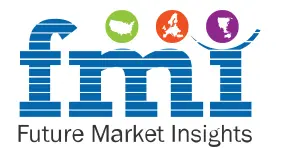Crafting Growth in the Global Beverage Market 2025–2035
The global beverage market is entering a decade of transformation between 2025 and 2035. Growth will be shaped by changing consumer preferences, health awareness, sustainability, and technology-driven innovation. Traditional alcoholic beverages such as wine, whiskey, rum, gin, and beer will remain significant, yet non-alcoholic and ready-to-drink categories are rising as the fastest growing segments. This whitepaper provides a roadmap for companies to align with shifting demand while navigating challenges in costs, compliance, and supply chains.
Market Dynamics
Wine will continue to expand steadily with a market size projected to reach USD 3.3 trillion by 2035. Premium and sustainable labels along with the fast growth of wine tourism are reshaping consumer engagement. Whiskey is forecast to triple in value to USD 345.7 billion. Premium labels and flavored variants such as bourbon are capturing greater value and reshaping profit pools across markets like India, the United States, and the United Kingdom. Rum and gin are re-emerging through craft production, flavored innovation, and cocktail culture. Beer, while still the world’s most consumed alcoholic beverage, is shifting toward value creation in fruit based, root beer, and especially non-alcoholic formats.
Non-alcoholic beverages are moving from niche to mainstream. Ready-to-drink functional and flavored beverages along with malt drinks are nearly doubling by 2035. This growth reflects younger generations choosing healthier and culturally acceptable options without giving up on taste or social participation.
Consumer Shifts
The decade will be defined by the polarization of demand. On one side consumers are paying more for premium and authentic experiences. On the other side non-alcoholic beverages are scaling with health and wellness as core drivers. The middle ground of standard beers and mid-range wines faces stagnation.
Key consumer trends include
- Premiumization across spirits, wine, and craft beverages where consumers value authenticity and heritage
- Health and wellness preferences that fuel non-alcoholic beer, malt, and ready-to-drink growth
- Experience economy where wine tourism, cocktail culture, and direct-to-consumer sales deepen brand loyalty
- Sustainability with packaging, ethical sourcing, and renewable operations shaping purchase decisions
Regional Outlook
Growth will not be uniform across geographies. Asia Pacific will lead expansion with India driving whiskey demand, China advancing flavored whiskey, and South Korea showing strong wine growth. Europe and North America will remain premium innovation hubs focused on sustainability and craft production. ASEAN and Latin America will provide opportunities through affordability and volume driven growth particularly in malt and non-alcoholic beverages.
Technology and Equipment
Technology is becoming the backbone of profitability in the beverage industry. Wine fermentation equipment is advancing with automation and sustainable materials. Beer brewing machines are expanding rapidly, reflecting the rise of home brewing and microbreweries. Eco-friendly packaging is one of the fastest growing segments, delivering both differentiation and compliance benefits. Together these innovations improve efficiency, expand margins, and respond to consumer expectations for transparency and sustainability.
Challenges Ahead
The industry will face multiple barriers. Packaging costs are rising as eco-friendly solutions gain traction. Compliance expenses are increasing due to labeling rules, sugar content restrictions, and alcohol marketing limitations. Climate change and water stress threaten production reliability. At the same time demand fragmentation complicates portfolio strategies. Companies that adapt early by redesigning packaging, optimizing supply chains, and balancing premium with non-alcoholic products will defend profitability.
Future Outlook
By 2035 the beverage market will undergo profit pool realignment. Premium alcohol will contribute about 58 percent of incremental growth while non-alcoholic categories will account for around 42 percent. This near balance shows the need for dual speed strategies. Businesses must invest in premium alcohol to capture high margins while also scaling non-alcoholic beverages for health driven and regulatory supported growth. Hybrid innovation that blends alcohol and non-alcoholic formats will appeal to younger consumers and open new trial opportunities.
Key insights for decision makers include
- Demand is polarized with premium alcohol and non-alcoholic wellness categories driving most growth
- Regional imbalances require dual strategies premium innovation in developed regions and affordability in emerging ones
- Technology investments in brewing machines and eco packaging deliver higher returns than traditional equipment
- Health and sustainability have become core value drivers across both alcoholic and non-alcoholic beverages
- Future winners will embrace dual portfolios balancing premium authenticity with non-alcoholic wellness while using sustainability and technology to secure consumer loyalty
